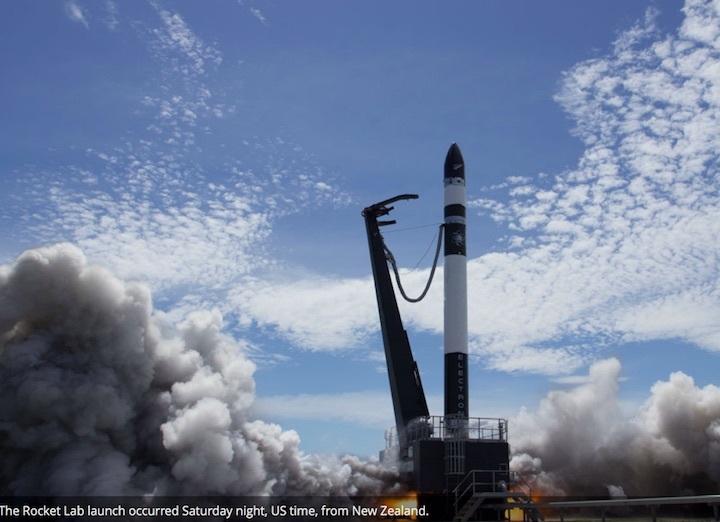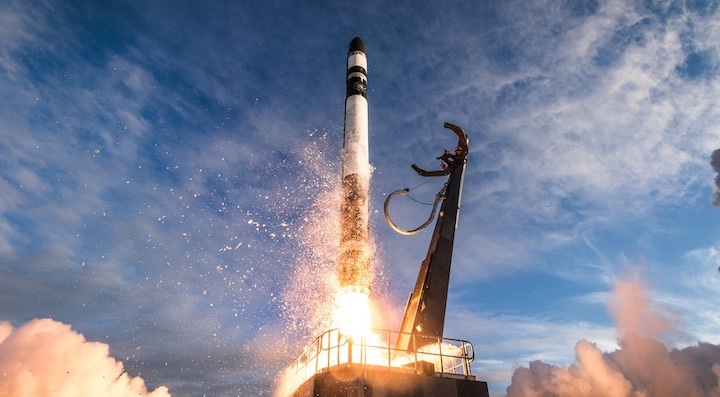25.01.2018
"It’s perplexing that... we don’t think about anything beyond our little sphere."


Last weekend, Rocket Lab successfully reached orbit for the first time with its Electron booster. Before the launch from New Zealand, the company publicized a handful of commercial payloads on board. But it turns out the rocket also carried a secret payload into space at the behest of the company's founder, Peter Beck.
This was the "Humanity Star," a disco ball-like geodesic sphere, which measures about 1 meter in diameter. It served no business purpose but rather reflected Beck's philosophy that by going into space, humans can improve our lives on Earth. With his first orbital launch, Beck wanted to make a statement by putting a bright object into space that people back on Earth could observe.
"The whole point of the program is to get everybody looking up at the star, but also past the star into the Universe, and reflect about the fact that we’re one species, on one planet," Beck told Ars in an interview before the launch. "This is not necessarily part of the Rocket Lab program; it’s more of a personal program. It’s certainly consistent with our goal of trying to democratize space."
Beck said the idea came to him after talking to people who would tell him what street they lived on or their country or origin. They knew where they lived on planet Earth, but they had no concept of where they were in the Solar System or the Universe. And it's just a big, wide Universe waiting to be explored, he felt. "It’s perplexing to me that as a species we don’t think about anything beyond our little sphere," Beck said.
A giant disco ball
This is at the heart of the ethos that drives a lot of the new space companies like SpaceX or Blue Origin: a desire to open up access to space, lower the costs, and see what humans can do among the stars—if only they can get there. Until now, space has been the province of a few national space agencies, who launch a handful of astronauts at a time. What if hundreds or thousands of people could go to space? Although he is focused on building small rockets for now, Beck is among those trying to push humans onward.
But can you really see the shiny sphere? The Humanity Star is something of an experiment. Beck isn't sure it will actually work. Made of carbon fiber materials, the sphere has 65 highly reflective panels, each about the size of a laptop. It truly is intended to act like a giant disco ball, to reflect the Sun's light back to Earth as it flies around the planet in a 300×500km orbit. It will last about nine months before its orbit begins to decay, and Humanity Star begins to fall back toward its cradle.
The company intends the object to be visible to the naked eye, all across the planet. "Most people will be familiar with the Iridium flares, and this has got much, much more surface area than an Iridium flare," Beck said. "In theory, it will be easy to find." Such a "flare" occurs when the solar panels or antennae of an Iridium communication satellite reflect sunlight onto the surface of the Earth.
Rocket Lab has set up website, which should become active on Wednesday, for people to track the Humanity Star's movement in real time.
Quelle: arsTechnica
---
Update: 26.01.2018
.
'Space graffiti': astronomers angry over launch of fake star into sky
Giant disco ball dubbed ‘Humanity Star’, launched by startup Rocket Lab, will interfere with scientific study of the universe, experts say
Last week the space exploration startup Rocket Lab launched a rocket from a remote sheep and cattle farm on the Mahia Peninsula in New Zealand.
The moment prompted jubilation and pride across New Zealand, with Rocket Lab’s founder and chief executive Peter Beck labelling it an “almost unprecedented” step in commercial space exploration.
But it has since emerged that as well as conventional satellites, the rocket was also carrying the “Humanity Star”, a three-foot-wide geodesic sphere made from carbon fibre and fitted with 65 highly reflective panels.
The sphere, the company has claimed, will reflect the sun’s rays back to Earth creating a flashing light visible from anywhere on the globe. It is expected to become the brightest object in the night sky for nine months until it re-enters Earth’s atmosphere.
Rocket Lab said the Humanity Star was supposed to be a “reminder to all on Earth about our fragile place in the universe”, and the company’s chief executive and founder, Peter Beck, said the sphere would “create a shared experience for everyone on the planet”.
But many astrophysicists disagree. Richard Easther from the University of Auckland told the Guardian that Rocket Lab may have unintentionally hit on a particularly sore point for his profession.
Light pollution is already a serious concern for scientists whose focus is on the stars, and the introduction of a glinting disco ball in space has not been widely welcomed.
“This one instance won’t be a big deal but the idea of it becoming commonplace, especially at larger scales, would bring astronomers out into the street,” Easther said.
“I can understand the exuberance for this sort of thing but I also get the sense that they did not realise that people could see a downside to it.”
Others were less diplomatic.
“Wow. Intentionally bright long-term space graffiti. Thanks a lot @RocketLab,” California Institute of Technology astronomer Mike Brown wrote on Twitter.
Or, as the director of astrobiology at Columbia University Caleb Scharf wrote in Scientific American, the star represented “another invasion of my personal universe, another flashing item asking for eyeballs”.
“Most of us would not think it cute if I stuck a big flashing strobe-light on a polar bear, or emblazoned my company slogan across the perilous upper reaches of Everest,” Scharf wrote.
“Jamming a brilliantly glinting sphere into the heavens feels similarly abusive. It’s definitely a reminder of our fragile place in the universe, because it’s infesting the very thing that we urgently need to cherish.”

